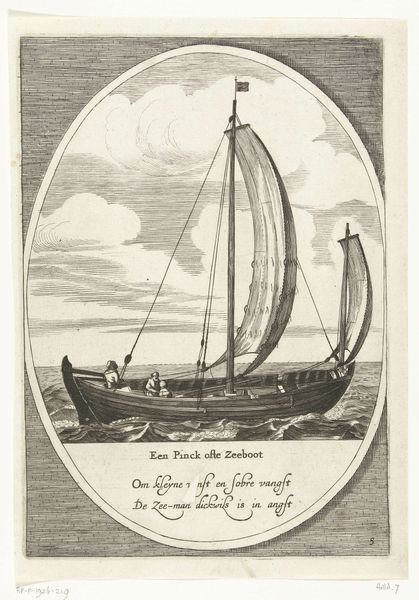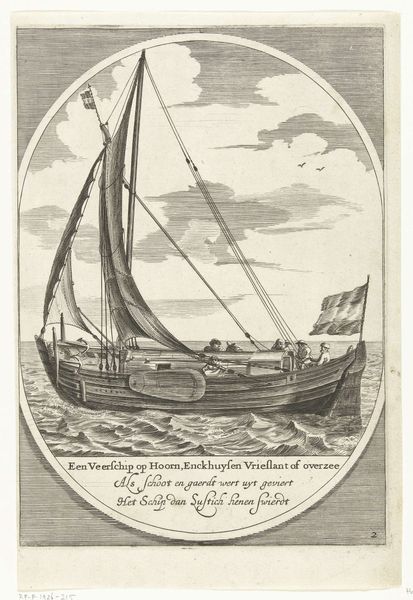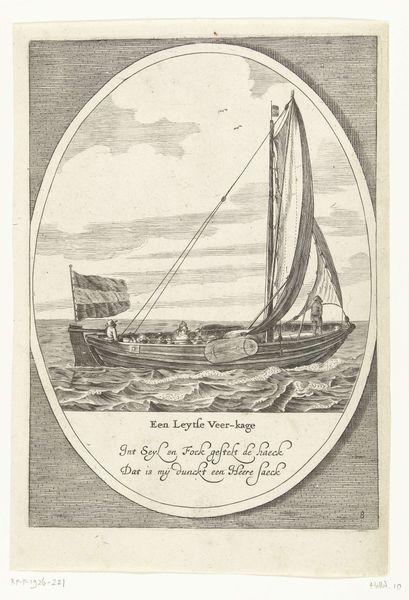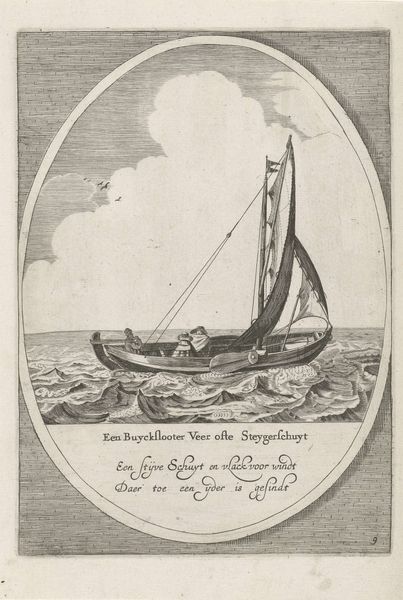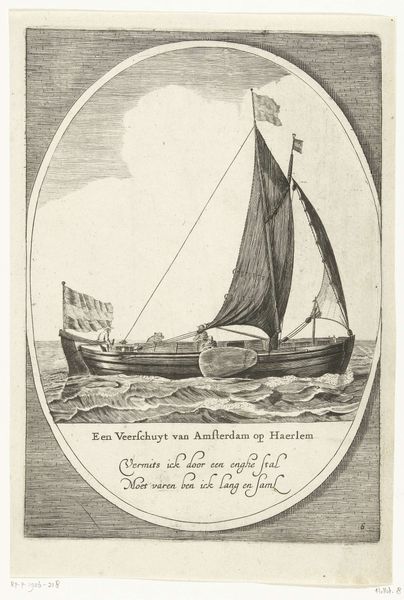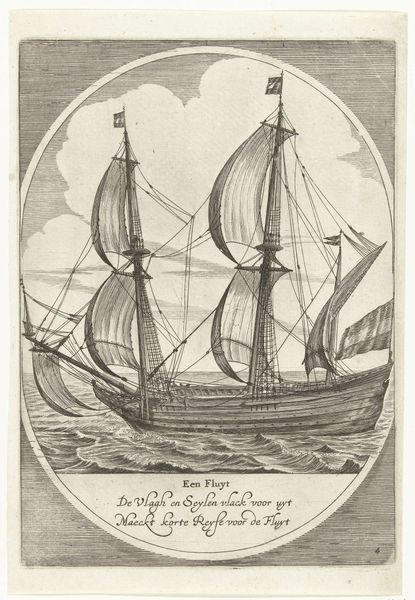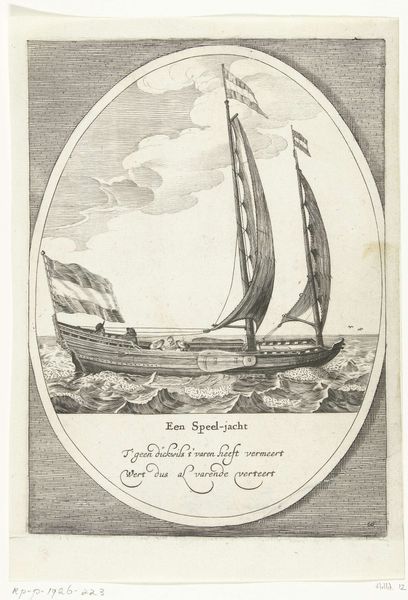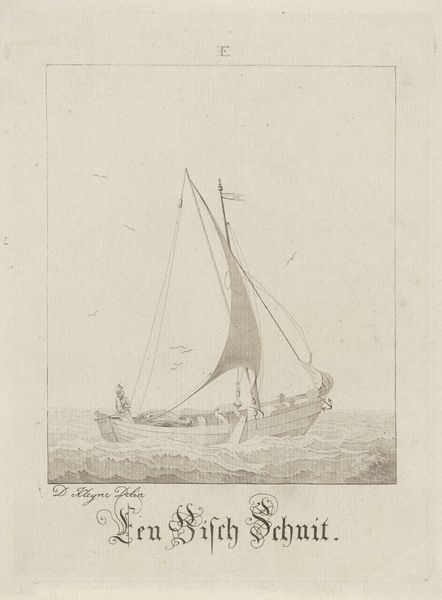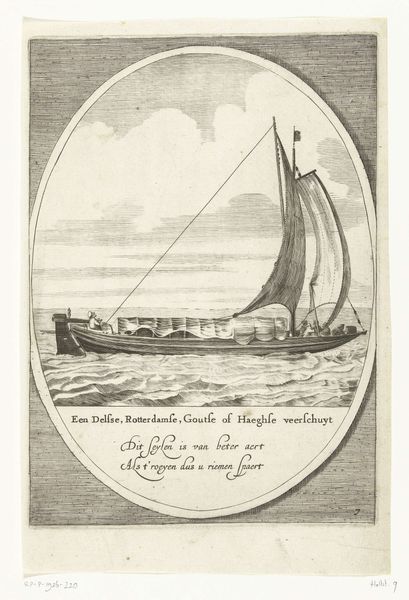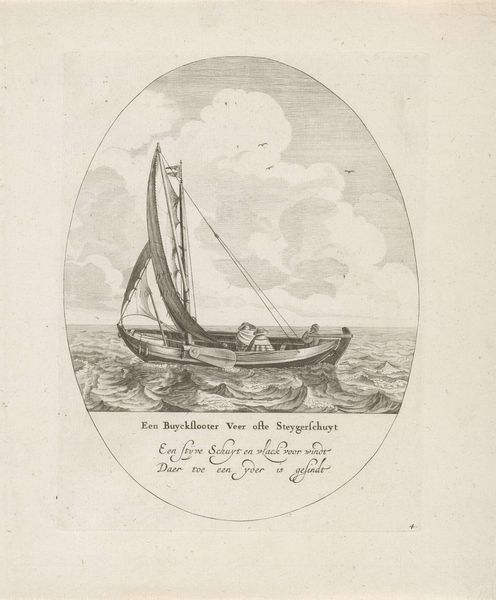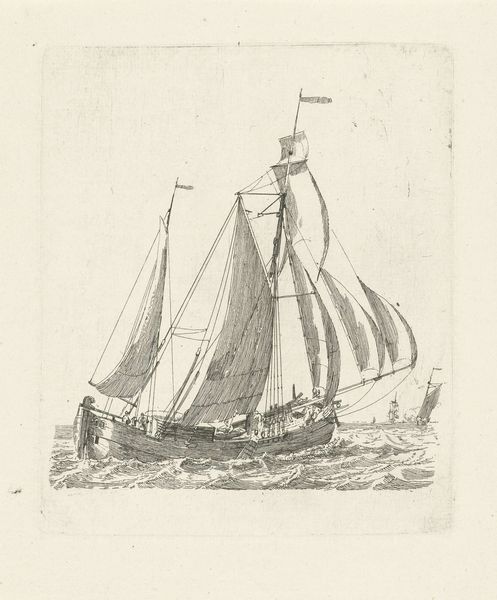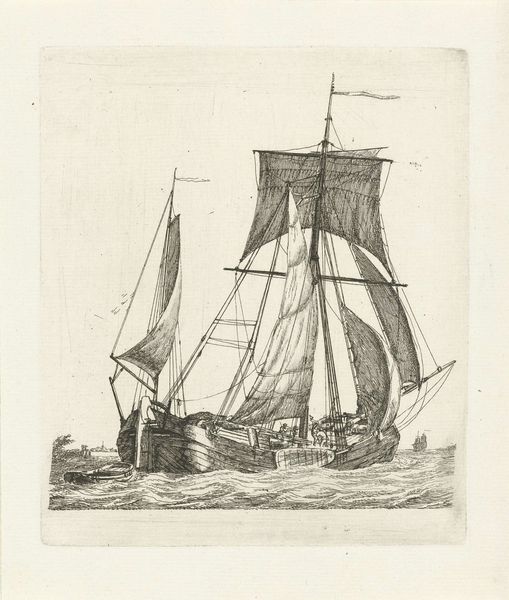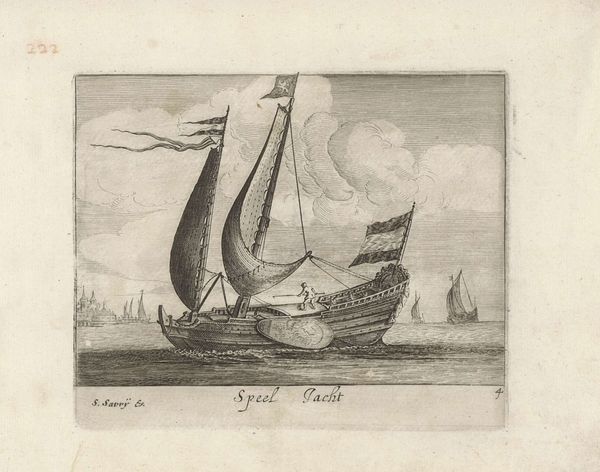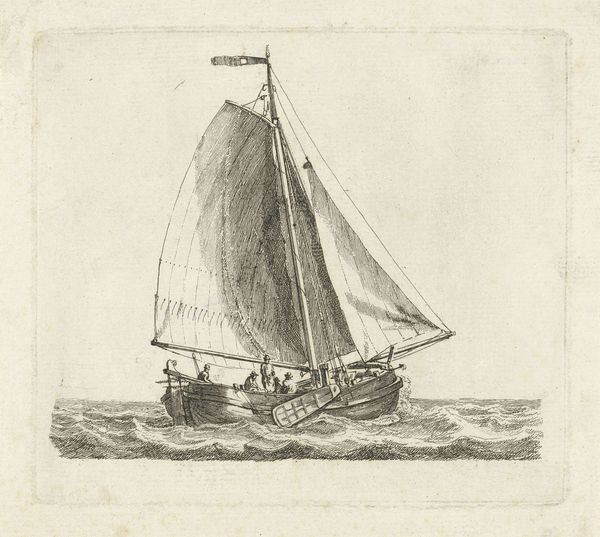
print, engraving
#
baroque
#
dutch-golden-age
# print
#
landscape
#
figuration
#
line
#
engraving
Dimensions: height 229 mm, width 163 mm
Copyright: Rijks Museum: Open Domain
Curator: This is a print titled "Een boeier," which translates to "A Yacht," dating back to 1642. It is an engraving currently housed in the Rijksmuseum. What's your initial reaction to this image? Editor: It's strikingly serene, in a way. Even with the waves, there is this calmness, likely created by the monochrome palette. Curator: Well, engravings often lean towards that aesthetic. But the technique itself also says a lot about the role prints played. Dissemination of imagery was central to building consensus around Dutch power. It helped disseminate political ideologies through what could almost be seen as propaganda in the digital age. Editor: That's an important point. Given the historical context—the Dutch Golden Age—this isn't just a simple scene of a boat, but something to project an image of mercantile success and national pride. I am interested in how these early lines render these ideals through composition. How would you relate the figure, style, and broader narrative? Curator: Certainly. There's the detail, typical of the era, focusing on maritime power and the visual culture associated with the sea. The very precise rendering and its place in popular visual imagery of that moment reflect wider institutional trends in representing the national narrative. But note also how it’s presented, framed within a circular border, making it almost appear like a porthole view. This framing serves to intensify the act of looking. Editor: Precisely. And these details of representation, especially the focus on this sailing ship, invites a larger intersectional reading. Curator: How so? Editor: Consider this print's representation of movement, of being at the helm. I wonder about access— who were allowed on the boat, and who owned that kind of mobility and the socioeconomic and even political freedoms it represented? Was this idyllic imagery aligned with most people’s material reality at the time? Curator: That's a necessary perspective. What’s visually pleasing can also serve to mask deeper inequalities. It reminds us to view art as a lens for questioning broader societal dynamics. Editor: Indeed, that’s why reflecting critically can illuminate power dynamics that might not be immediately visible but are absolutely crucial to understanding these pieces in the fullness of time.
Comments
No comments
Be the first to comment and join the conversation on the ultimate creative platform.
